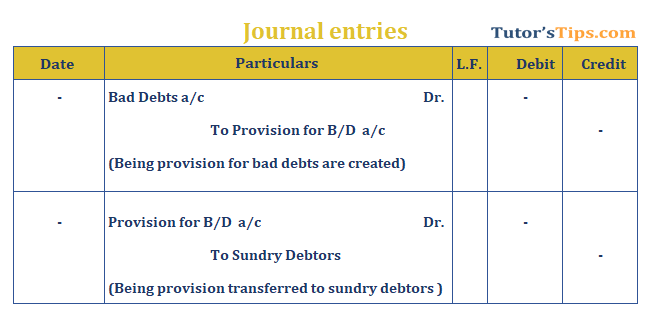Today we are covering the technical and theoretical topic of the Provision in accounting. So please read it very consciously and in this article, you will learn the meaning of the Provision in accounting types of Provision in accounting, accounting treatment of provision and we will make it an understandable topic in much better ways with the help of examples.
What is Provision in accounting
The provision in accounting means that amount which is charged against Profit or loss account(Income statement) for some uncertain amount of known liability which will be incurred in the near future.
To calculate the true profit or loss of the business for the current year, we have to charge the unknown amount of known expenses or liabilities which are related to current year operating activities to profit/loss account on a proportionate basis by making provision for this amount at the time of preparing financial statements.
For example, We have always some sort of debtors that will not pay our dues, So provision for doubtful debts is created to charge that amount of loss to the Profit/loss account (income statement).
“According To Part III, Schedule VI of the Companies Act, 1956,
The expression ‘provision’ shall mean (i) any amount written off or retained by way of providing for depreciation, renewals or diminution in value of assets or (ii) retained by way of providing for known liability or which the amount cannot be determined with substantial accuracy. “
Types and treatment of Provision in accounting:-
Thus the creation of provision ensures proper matching of revenues and expenses and calculation of true profit. The following provisions are created at the time of preparing the financial statement:-
- Provision for Bad and Doubtful Debts.
- Provision for Discount to debtors.
- Provision for Discount form Creditors.
- Provision for Taxation.
- Provision for Depreciation.
1. Provision for Bad and Doubtful Debts:-
Generally, there are some of the debts which cannot be realized from the debtors/receivable due to various reasons like the death of debtors, insolvency, liquidation or debtors are not traceable, etc. These types of debtors/receivables are treated in the books as a term of bad debts. The Accounting journal entry of provision for bad Debt is shown in the image below.
2. Provision for Discount to debtors:-
To get payment earlier we have to give the discount to our sundry debtors/ Receivables. So, we have made provision for a discount to debtors/receivables in the current year. The Accounting journal entry of provision for Discount to debtors is shown in the image below.
3. Provision for Discount from Creditors:-
The creditors/payable will also give us a discount to get paid earlier. So, we have made provision for the discount from Creditors/Payable in the current year.
Advertisement-X
However, in practicality if, there is an agreement between the business and the creditors for some provision of discount/cashback (as in the case of digital transactions nowadays), only then, shall one provide for the discount from creditors. The discount provision is available in advance as a rate or as mentioned in the agreement.
The Accounting journal entry of provision for Discount from Creditors is shown in the image below.
4. Provision for Taxation: –
The Provision for taxation is created to meet the expected income tax payable on the income of the current year. The Accounting journal entry of provision for Taxation is shown in the image below.
5. Provision for Depreciation:-
When the original book value of assets shown in the Balance sheet and Accumulated depreciation/Provision for depreciation account is opened and shown in the liability side of the balance sheet or can be subtracted from the asset account. The Accounting journal entry of provision for Depreciation is shown in the image below.
Thanks for reading the topic of Provision in Accounting, please comment with your feedback whatever you want. If you have any questions please ask us by commenting.
Thanks Please share with your friends
Check out Financial Accounting Books @ Amazon











4 Comments